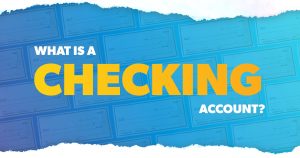While bonds are generally considered a relatively safe investment and can provide income for investors, there are still a few mistakes investors should avoid making when it comes to investing in bonds. Understanding these mistakes can be crucial to avoiding them.
4 mistakes to avoid when buying bonds
Many investors have bonds as part of their portfolios, and for good reasons. Bonds provide diversification, risk management and less volatility, but bonds are still investments with some risk and come with a few caveats to consider before you invest.
Here’s a look at four common mistakes to avoid when buying bonds.
1. Not having an investment plan
It goes without saying, but having a plan before investing is essential.
Take time to consider your long-term goals. Do you want to buy a home? Are you saving for an emergency fund? Paying off short-term debt? Asking yourself these types of questions can help you establish what exactly it is you’re working toward financially, how investing fits into that picture and how much money you can afford to invest.
Many investors pick bonds for their long-term portfolios to provide stability and balance in a portfolio that’s otherwise tilted toward stocks and other higher-risk investments. You won’t get rich quickly with bonds or even slowly if you only hold bonds. The trade-off for less risk is less return. That means bonds are usually part of a long-term investment strategy, such as having stable income in retirement.
Once you determine your goals, decide what you want your asset allocation to be. That is, how much of your portfolio do you want to be bonds versus stocks and other assets. If you don’t know where to start, speaking with a financial advisor may be helpful. Investing in bonds through a robo-advisor, target-date fund or a bond fund instead of individual bonds are also options.
Need an advisor?
Looking for expert guidance when it comes to managing your investments or planning for retirement? Bankrate’s AdvisorMatch can connect you to a CFP® professional to help you achieve your financial goals.
2. Ignoring the role that interest rates play
Bonds don’t operate like stocks do, in that bonds are heavily influenced by current interest rates. When interest rates rise, bond prices tend to fall. This happens because new bonds are issued with higher interest payments, making them more attractive than existing bonds with lower payouts. The opposite tends to happen when interest rates decline.
This inverse relationship means that if the Federal Reserve raises interest rates to tame inflation, for example, bonds with longer maturities will see a decrease in price because newer bonds on the market pay a higher interest rate.
This relationship can be key to understanding when to buy and sell bonds to maximize your returns. Also, knowing how changes in the economy may affect your portfolio can help you better adjust your strategy and stay on track with your financial goals.
3. Not diversifying your bond holdings
Diversification across all asset classes is important, especially when it comes to bonds. By including bonds of various types and maturities in your portfolio, you’ll be more ready to endure market ups and downs.
Instead of buying several of the same bond or type of bond, consider owning different kinds of bonds with varying maturities. For example, long-term government bonds like U.S. Treasurys are known to provide steady income and hold up during economic downturns, while corporate bonds are sometimes favored during periods of economic growth and can offer higher returns.
You can diversify your bond holdings without buying individual bonds, though. A bond fund offers access to many types of bonds without the work of researching and buying bonds yourself. By owning shares of a bond fund, you hold a portion of many different bonds, which provides immediate diversification without the need to purchase each bond individually. Bond funds also have lower minimum investment requirements, and it’s easier to sell your shares.
4. Not thinking of opportunity cost
Opportunity cost, which is what you give up when choosing one option over another, is also something to consider when buying bonds. Any dollar that you put into bonds is a dollar you can’t use somewhere else. So is buying a bond the optimal use of that dollar?
To decide, revisit your reason for buying bonds in the first place. Is it to diversify your portfolio? Is it to ensure a steady stream of income in retirement? If you have a higher risk tolerance and a longer time horizon until you reach retirement, would your cash be better served by investing more heavily in stocks that typically offer higher returns?
Bottom line
If you want to buy bonds, start by having a plan, understanding the role interest rates play and knowing how you want to diversify your holdings. Take time to identify your financial goals, too, and stick to your plan to reach them. At the end of the day, making sure you have a well-rounded portfolio that meets your needs is crucial.
Editorial Disclaimer: All investors are advised to conduct their own independent research into investment strategies before making an investment decision. In addition, investors are advised that past investment product performance is no guarantee of future price appreciation.
Read the full article here












